Abstract
We prospectively compared a commercially available Legionella DNA probe with culture and direct immunofluorescence. The analytical sensitivities of the DNA probe and direct immunofluorescence were equal. Both tests detected 4 X 10(3) CFU of Legionella pneumophila or Legionella micdadei per ml in the pulmonary secretions of experimentally infected guinea pigs. The diagnostic sensitivity of the reagent was evaluated by using 809 samples of respiratory secretions. Of 51 DNA probe-positive specimens, 31 came from patients with culture-confirmed legionellosis. Two culture-positive specimens had negative DNA probe tests. The sensitivity and specificity of the DNA probe were 93.9 and 97.4%, respectively. The sensitivity and specificity of direct immunofluorescence were 68.9 and 99.6%, respectively. The low specificity of the DNA probe resulted in an unacceptable positive predictive value (60.8%). False-positive DNA probe tests were not due to nonspecific binding of the probe or to technical problems but were associated with one lot of probe reagent. Most of the false-positive probe tests had values near the threshold value of greater than or equal to 4.0 suggested by the manufacturer. Raising the threshold value for a positive test to 7 lowered the sensitivity to 69.2% but raised the specificity to 99.2%. At this level, the performances of the DNA probe and direct fluorescent-antibody testing were equivalent. Respiratory secretions from patients receiving therapy for culture-confirmed Legionella infection remained DNA probe positive for up to 8 days, even though cultures and/or direct immunofluorescence tests often became negative. The DNA probe test is a satisfactory replacement for direct immunofluorescence but cannot replace culture for the laboratory diagnosis of Legionella infections.
Full text
PDF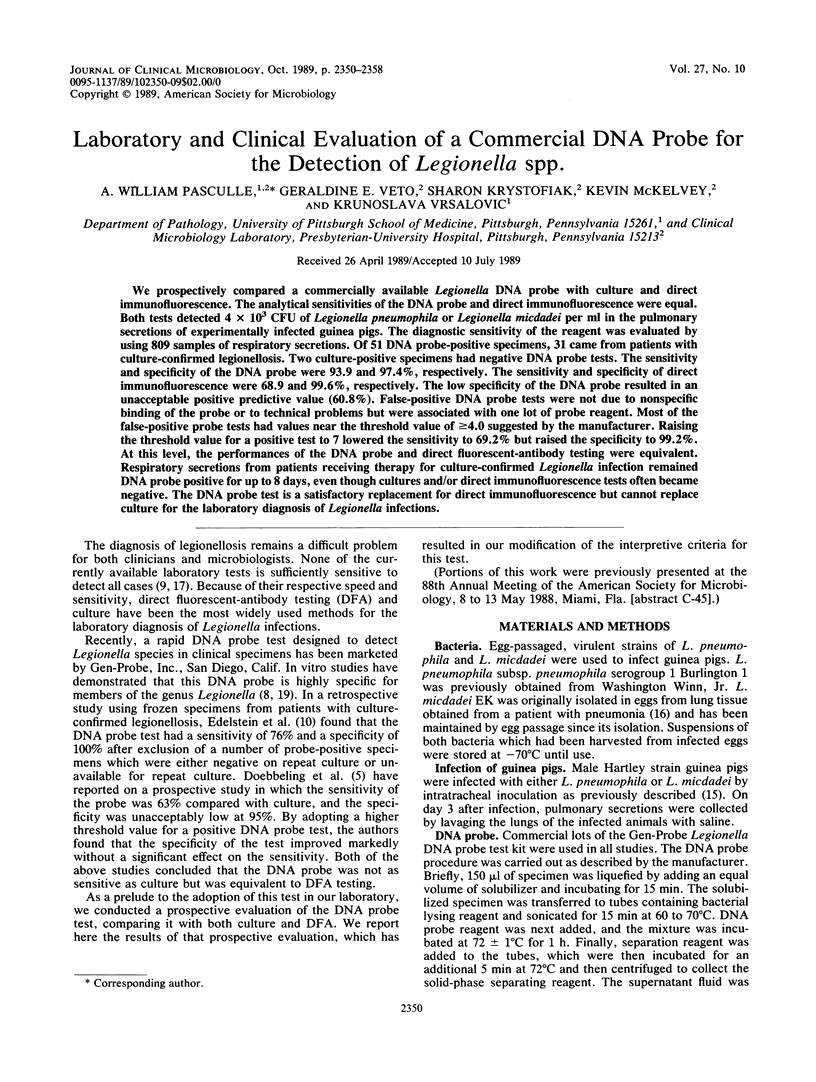
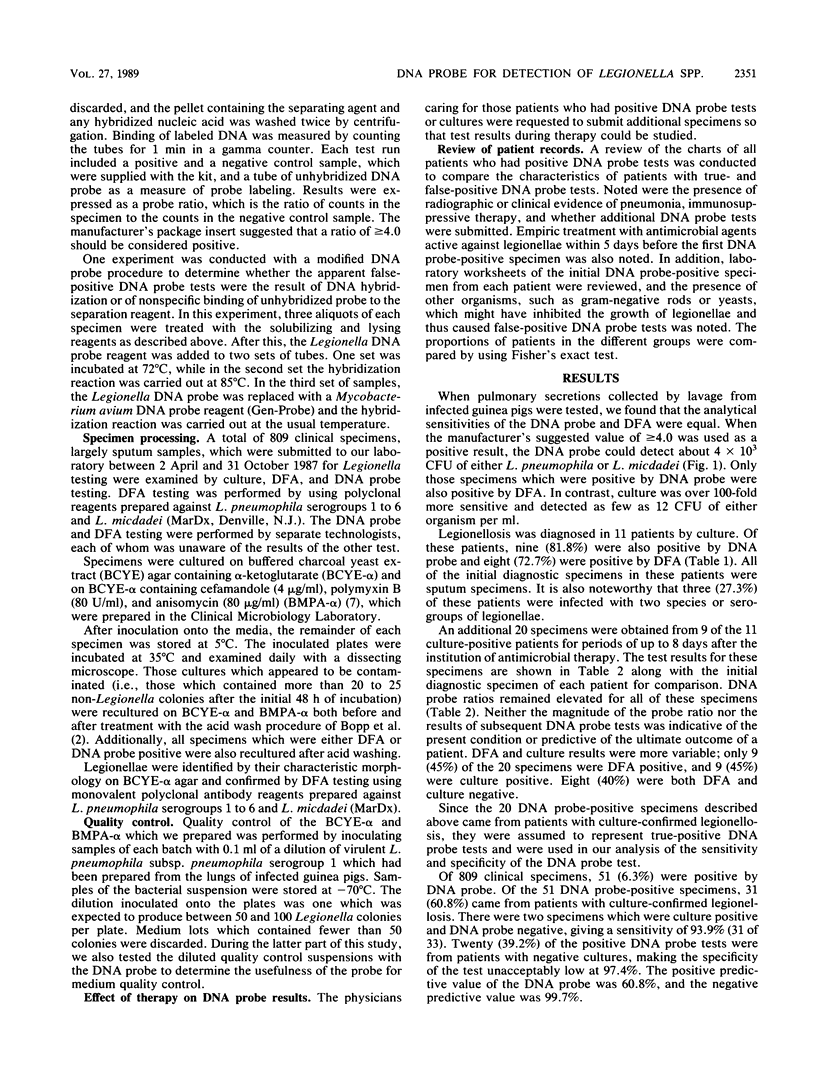
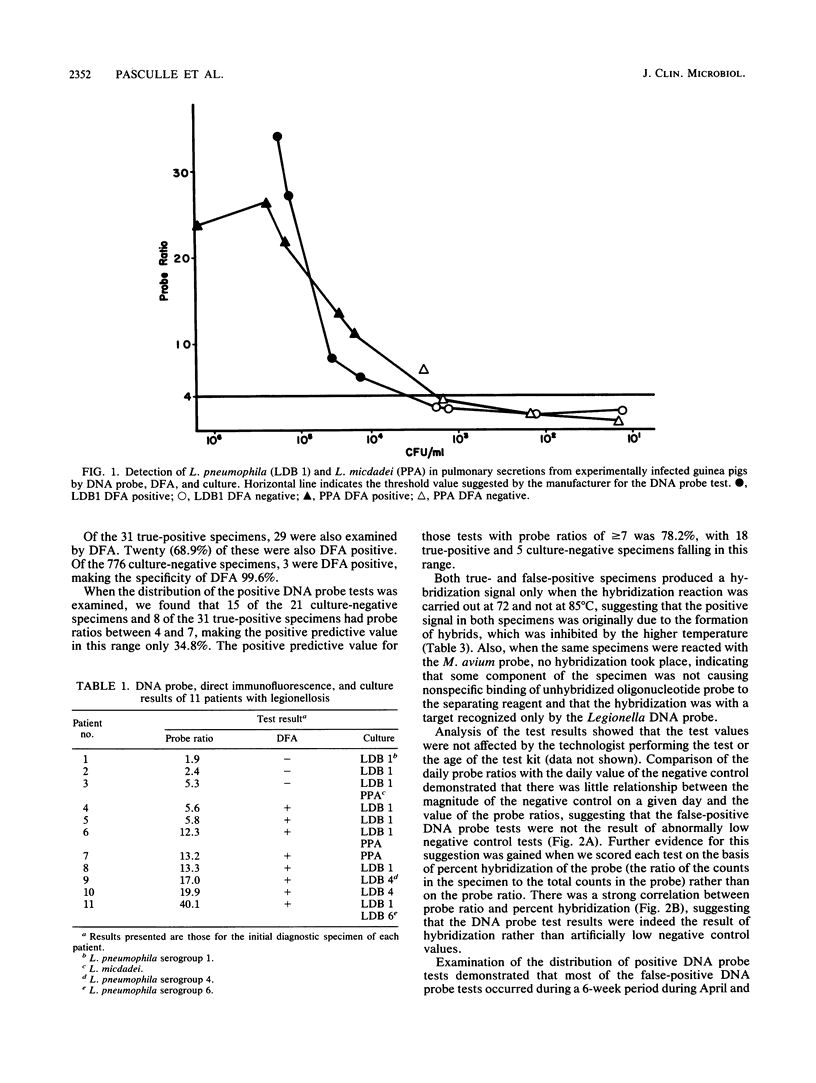
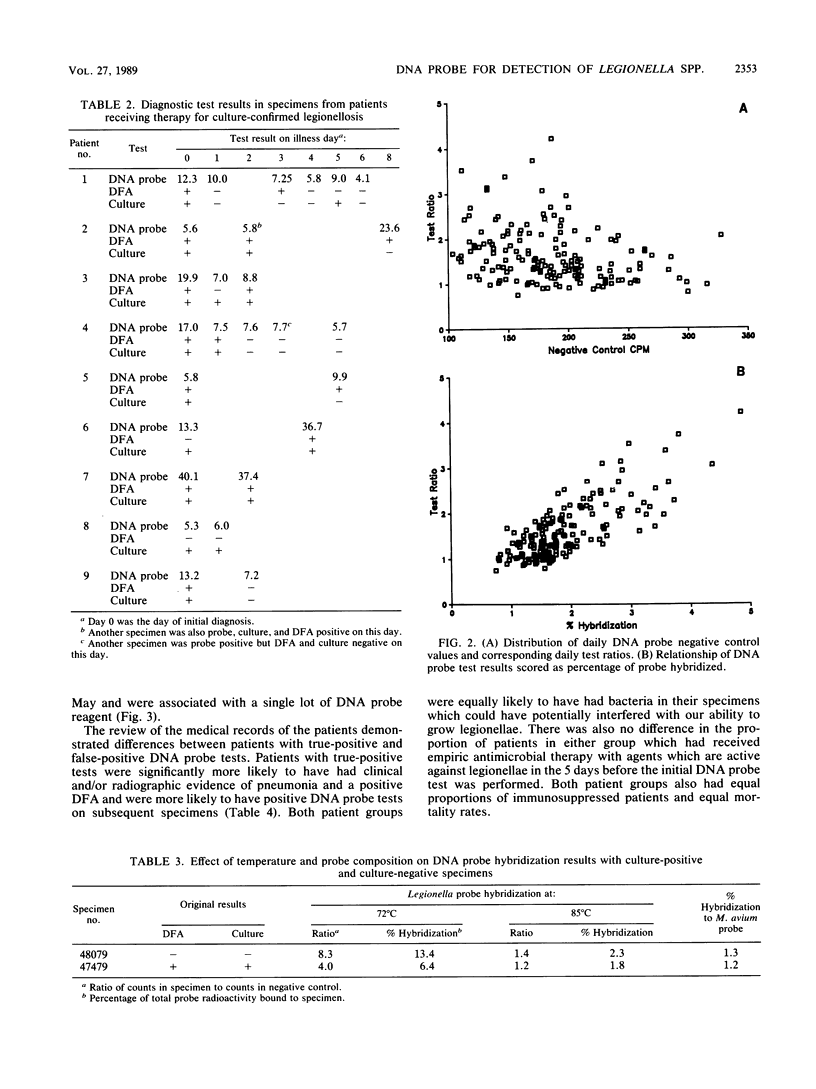
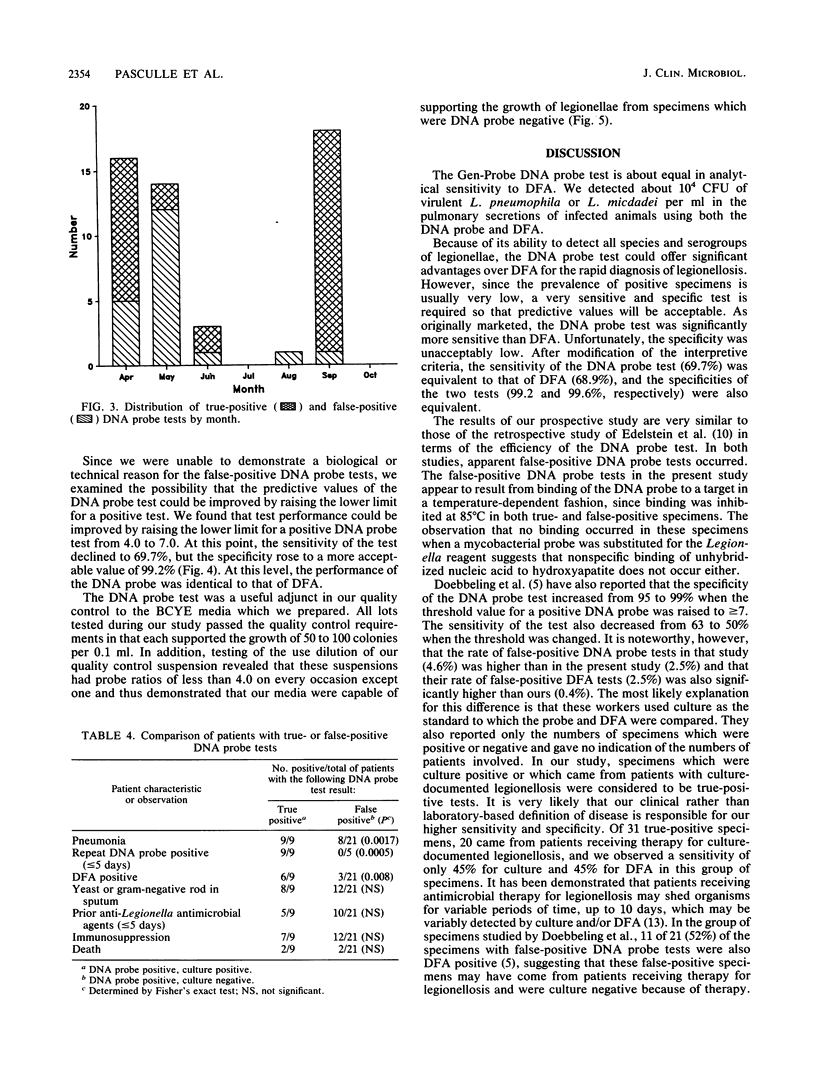
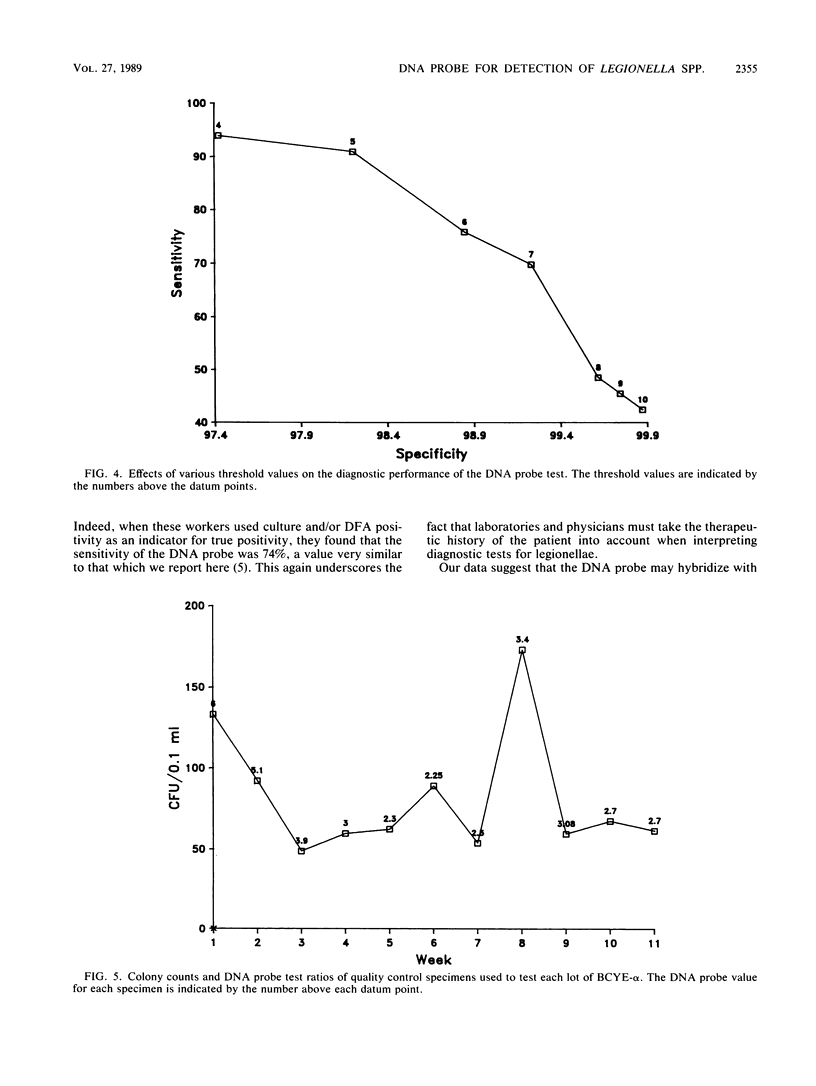
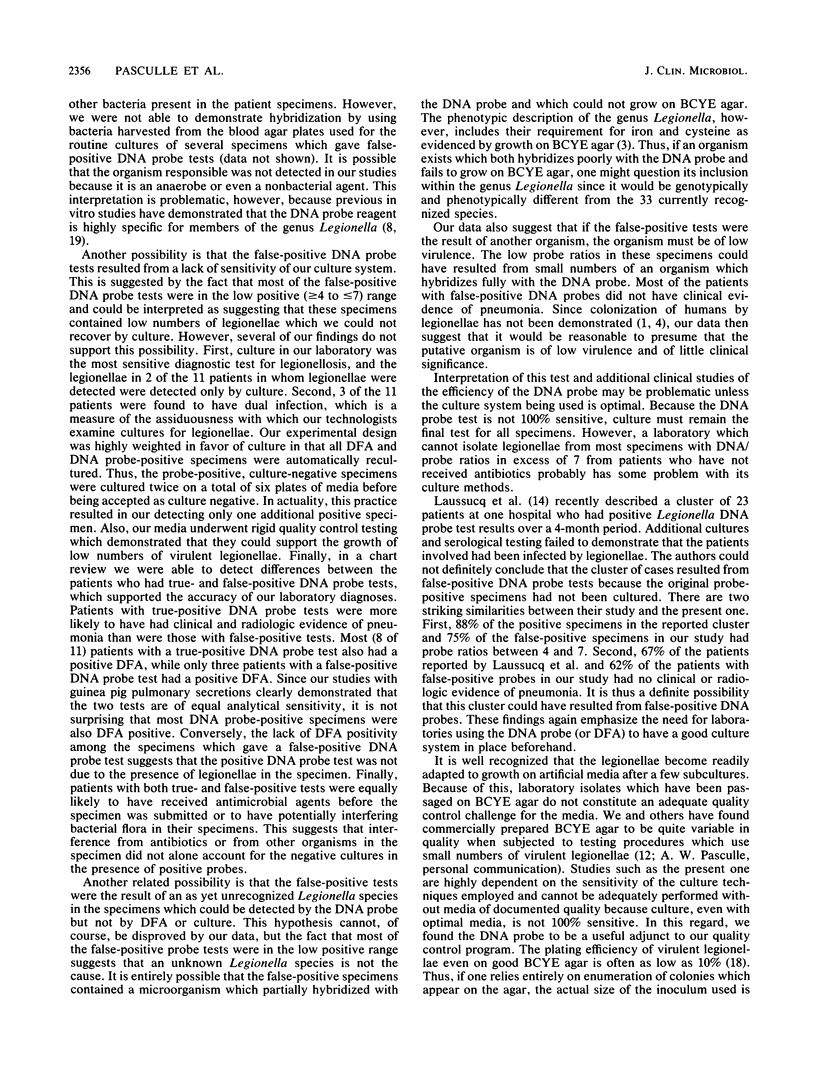
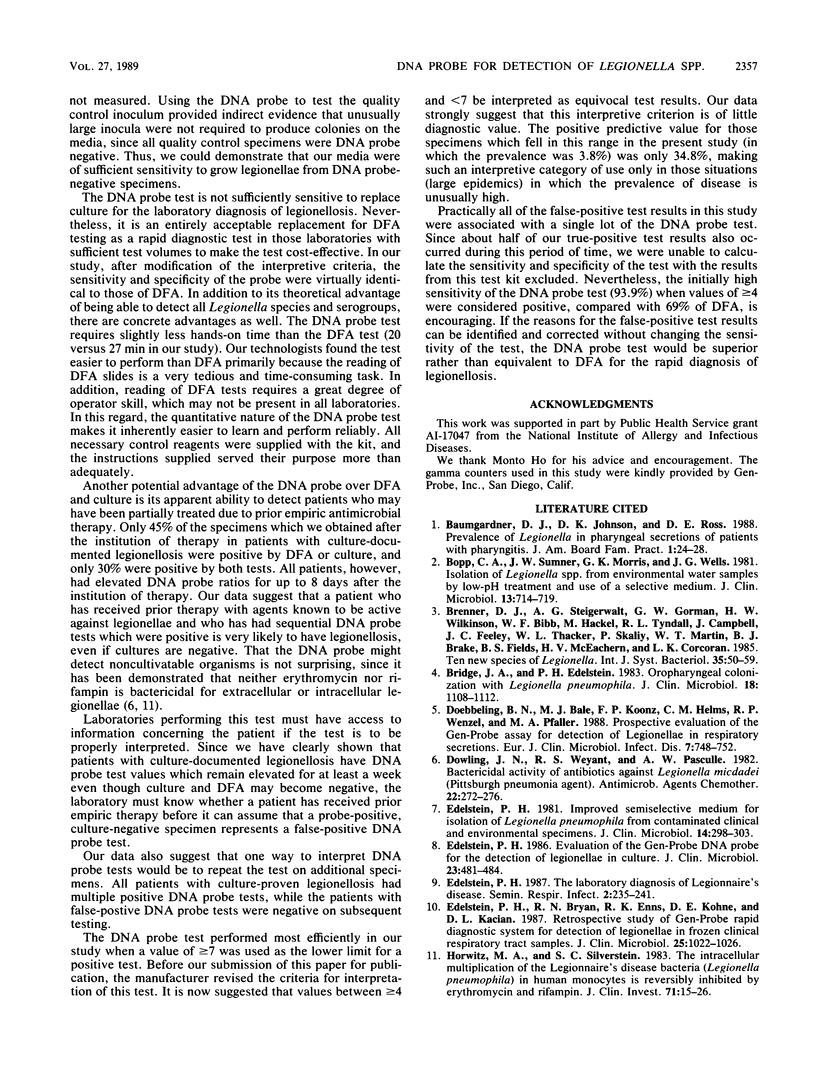
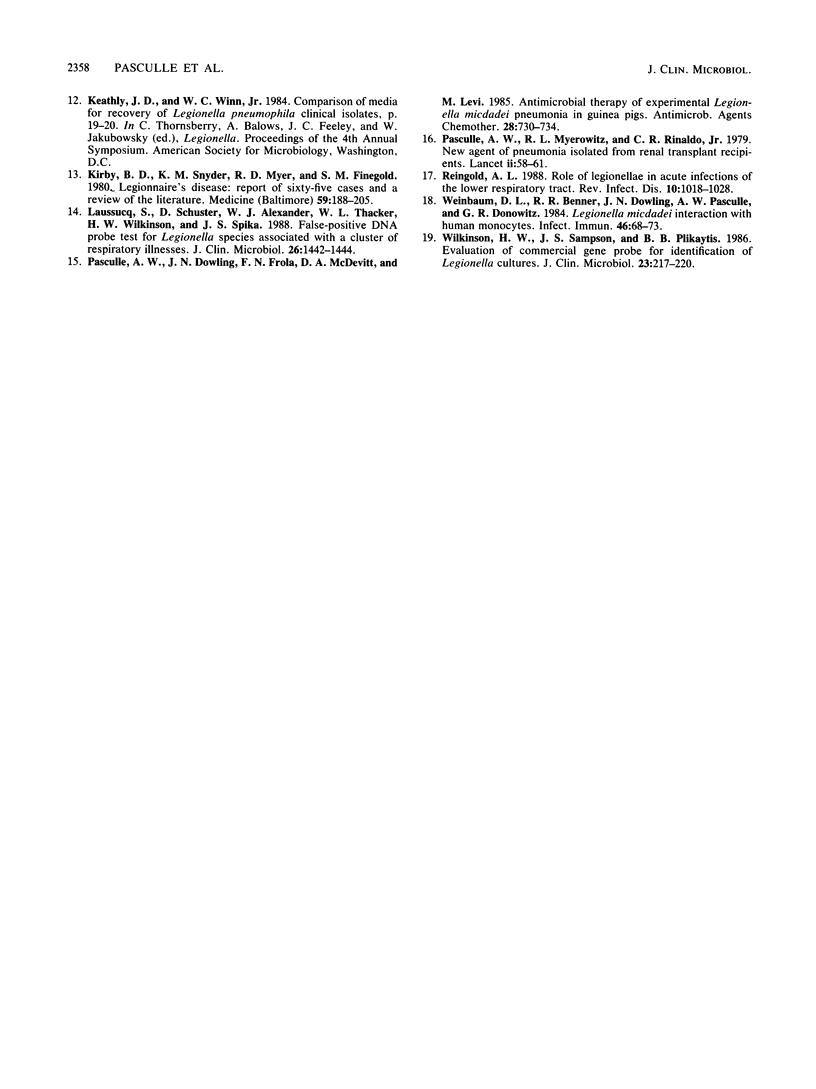
Selected References
These references are in PubMed. This may not be the complete list of references from this article.
- Baumgardner D. J., Johnson D. K., Ross J. E. Prevalence of Legionella in pharyngeal secretions of patients with pharyngitis. J Am Board Fam Pract. 1988 Jan-Mar;1(1):24–28. [PubMed] [Google Scholar]
- Bopp C. A., Sumner J. W., Morris G. K., Wells J. G. Isolation of Legionella spp. from environmental water samples by low-pH treatment and use of a selective medium. J Clin Microbiol. 1981 Apr;13(4):714–719. doi: 10.1128/jcm.13.4.714-719.1981. [DOI] [PMC free article] [PubMed] [Google Scholar]
- Bridge J. A., Edelstein P. H. Oropharyngeal colonization with Legionella pneumophila. J Clin Microbiol. 1983 Nov;18(5):1108–1112. doi: 10.1128/jcm.18.5.1108-1112.1983. [DOI] [PMC free article] [PubMed] [Google Scholar]
- Doebbeling B. N., Bale M. J., Koontz F. P., Helms C. M., Wenzel R. P., Pfaller M. A. Prospective evaluation of the Gen-Probe assay for detection of legionellae in respiratory specimens. Eur J Clin Microbiol Infect Dis. 1988 Dec;7(6):748–752. doi: 10.1007/BF01975041. [DOI] [PubMed] [Google Scholar]
- Dowling J. N., Weyant R. S., Pasculle A. W. Bactericidal activity of antibiotics against Legionella micdadei (Pittsburgh pneumonia agent). Antimicrob Agents Chemother. 1982 Aug;22(2):272–276. doi: 10.1128/aac.22.2.272. [DOI] [PMC free article] [PubMed] [Google Scholar]
- Edelstein P. H., Bryan R. N., Enns R. K., Kohne D. E., Kacian D. L. Retrospective study of Gen-Probe rapid diagnostic system for detection of legionellae in frozen clinical respiratory tract samples. J Clin Microbiol. 1987 Jun;25(6):1022–1026. doi: 10.1128/jcm.25.6.1022-1026.1987. [DOI] [PMC free article] [PubMed] [Google Scholar]
- Edelstein P. H. Evaluation of the Gen-Probe DNA probe for the detection of legionellae in culture. J Clin Microbiol. 1986 Mar;23(3):481–484. doi: 10.1128/jcm.23.3.481-484.1986. [DOI] [PMC free article] [PubMed] [Google Scholar]
- Edelstein P. H. Improved semiselective medium for isolation of Legionella pneumophila from contaminated clinical and environmental specimens. J Clin Microbiol. 1981 Sep;14(3):298–303. doi: 10.1128/jcm.14.3.298-303.1981. [DOI] [PMC free article] [PubMed] [Google Scholar]
- Edelstein P. H. The laboratory diagnosis of Legionnaires' disease. Semin Respir Infect. 1987 Dec;2(4):235–241. [PubMed] [Google Scholar]
- Horwitz M. A., Silverstein S. C. Intracellular multiplication of Legionnaires' disease bacteria (Legionella pneumophila) in human monocytes is reversibly inhibited by erythromycin and rifampin. J Clin Invest. 1983 Jan;71(1):15–26. doi: 10.1172/JCI110744. [DOI] [PMC free article] [PubMed] [Google Scholar]
- Kirby B. D., Snyder K. M., Meyer R. D., Finegold S. M. Legionnaires' disease: report of sixty-five nosocomially acquired cases of review of the literature. Medicine (Baltimore) 1980 May;59(3):188–205. [PubMed] [Google Scholar]
- Laussucq S., Schuster D., Alexander W. J., Thacker W. L., Wilkinson H. W., Spika J. S. False-positive DNA probe test for Legionella species associated with a cluster of respiratory illnesses. J Clin Microbiol. 1988 Aug;26(8):1442–1444. doi: 10.1128/jcm.26.8.1442-1444.1988. [DOI] [PMC free article] [PubMed] [Google Scholar]
- Pasculle A. W., Dowling J. N., Frola F. N., McDevitt D. A., Levi M. A. Antimicrobial therapy of experimental Legionella micdadei pneumonia in guinea pigs. Antimicrob Agents Chemother. 1985 Dec;28(6):730–734. doi: 10.1128/aac.28.6.730. [DOI] [PMC free article] [PubMed] [Google Scholar]
- Pasculle A. W., Myerowitz R. L., Rinaldo C. R., Jr New bacterial agent of pneumonia isolated from renal-transplant recipients. Lancet. 1979 Jul 14;2(8133):58–61. doi: 10.1016/s0140-6736(79)90117-x. [DOI] [PubMed] [Google Scholar]
- Reingold A. L. Role of legionellae in acute infections of the lower respiratory tract. Rev Infect Dis. 1988 Sep-Oct;10(5):1018–1028. doi: 10.1093/clinids/10.5.1018. [DOI] [PubMed] [Google Scholar]
- Weinbaum D. L., Benner R. R., Dowling J. N., Alpern A., Pasculle A. W., Donowitz G. R. Interaction of Legionella micdadei with human monocytes. Infect Immun. 1984 Oct;46(1):68–73. doi: 10.1128/iai.46.1.68-73.1984. [DOI] [PMC free article] [PubMed] [Google Scholar]
- Wilkinson H. W., Sampson J. S., Plikaytis B. B. Evaluation of a commercial gene probe for identification of Legionella cultures. J Clin Microbiol. 1986 Feb;23(2):217–220. doi: 10.1128/jcm.23.2.217-220.1986. [DOI] [PMC free article] [PubMed] [Google Scholar]


